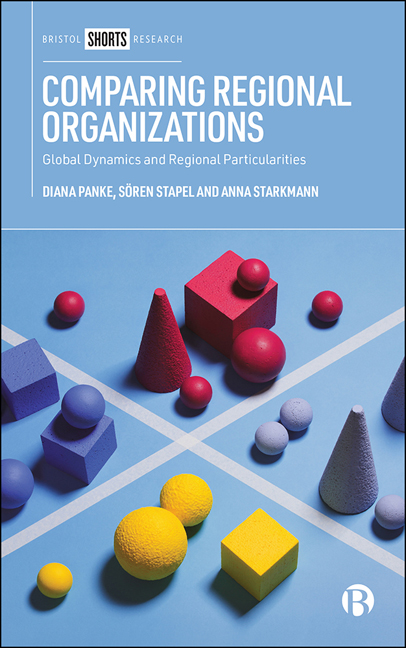Book contents
- Frontmatter
- Contents
- List of Figures and Tables
- Abbreviations
- Preface
- One Introduction
- Two Conceptual Framework and Measurement
- Three The Global Perspective
- Four Regional Organizations in Africa
- Five Regional Organizations in the Americas
- Six Regional Organizations in Asia
- Seven Regional Organizations in Europe
- Eight Conclusion
- Notes
- Appendix
- References
- Index
Four - Regional Organizations in Africa
Published online by Cambridge University Press: 12 March 2021
- Frontmatter
- Contents
- List of Figures and Tables
- Abbreviations
- Preface
- One Introduction
- Two Conceptual Framework and Measurement
- Three The Global Perspective
- Four Regional Organizations in Africa
- Five Regional Organizations in the Americas
- Six Regional Organizations in Asia
- Seven Regional Organizations in Europe
- Eight Conclusion
- Notes
- Appendix
- References
- Index
Summary
ROs have proliferated around the globe, becoming larger in size and broader in policy scope over time (see Chapter 3). This chapter examines whether there are regional particularities in the development of African ROs. To this end, it sheds light on patterns and trajectories of regional cooperation in Africa by putting all 23 African ROs in comparative perspective. Thus, this chapter complements the various case studies on selected individual ROs (Mazzeo, 1984; Söderbaum, 1996, 2003; Bach, 2016; Hartmann, 2016).
In a first step, the chapter introduces the various African ROs and presents information regarding their creation. The focus lies on membership dynamics in the period between 1945 and 2015. The subsequent descriptive analysis zooms in on the policy competency dynamics, thereby providing a detailed account of the scope of regional cooperation in Africa. In the final section, the chapter situates African organizations in the typology of ROs.
The chapter shows that regional cooperation has taken hold in Africa. While two of the oldest organizations covered in the ROCO dataset are located in Africa (AL and SACU), there has equally been a slight delay in the creation of ROs as decolonization did not occur until the early 1960s in Sub-Saharan Africa. Subsequently, there has been an increase in the number of formal, state-led ROs and a considerable increase in membership size and policy scope. These developments started to take place in the late 1960s and early 1970s in particular, and regional cooperation has flourished ever since. Today, most of Africa's ROs resemble the small selective type. Large selective, small encompassing, and large encompassing ROs also occur, albeit less frequently.
Membership dynamics in African ROs
Twenty-three multi-purpose ROs created in Africa up to 2015 are covered in the ROCO dataset – the highest number of ROs of all four regions. The oldest African RO is SACU, which was founded in 1910 between the Union of South Africa and the High Commission Territories of Bechuanaland, Basutoland and Swaziland. After independence, Botswana, Lesotho, South Africa and the Kingdom of Eswatini (formerly Swaziland) kept the customs union in place, and Namibia joined the organization after formal independence from South Africa in 1990 (Gibb, 2006). Another long-lasting organization is the AL, which was the first RO to be created after the end of World War II.
- Type
- Chapter
- Information
- Comparing Regional OrganizationsGlobal Dynamics and Regional Particularities, pp. 45 - 64Publisher: Bristol University PressPrint publication year: 2020

